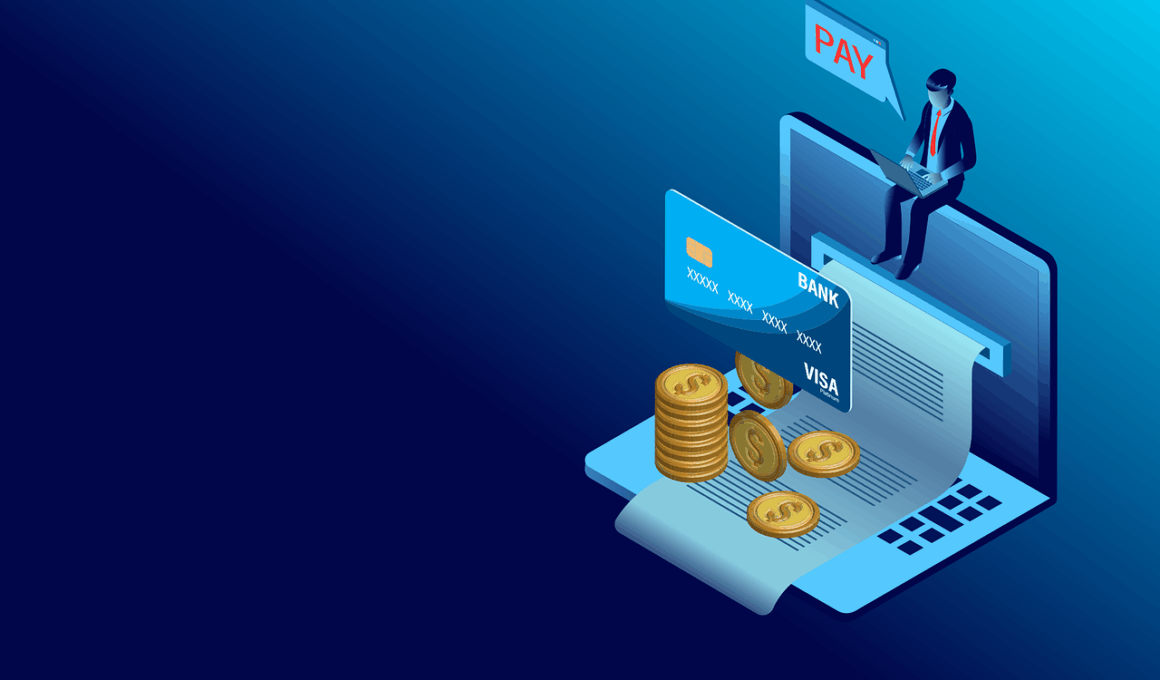Using Technology and Apps for Debt Tracking
Debt management has evolved significantly due to the advent of technology. Today, individuals facing financial challenges can use various apps designed to simplify debt tracking and management. These tools help users monitor their debts, plan repayments, and make informed financial decisions. Most applications feature intuitive interfaces that make it easy to input and categorize different debts, including credit cards, personal loans, and mortgages. By consolidating all debt information into one platform, users gain a clearer picture of their financial status. Many of these apps send notifications or reminders for upcoming payments, ensuring that users stay on top of their obligations. Additionally, some apps come equipped with budgeting features, enabling users to allocate funds effectively while managing their debts. The integration of artificial intelligence and machine learning into these applications offers personalized insights, helping users understand their spending habits and suggest possible improvements. Therefore, utilizing technology and apps can lead to more disciplined spending and effective debt repayment plans, ultimately facilitating a more secure financial future for individuals.
Debt can be overwhelming, but leveraging technology helps simplify complexity. Apps designed for debt management not only track debts but also provide educational resources. Users can access articles, videos, and tools to better understand their financial situations. Some platforms emphasize the importance of setting specific goals, such as debt-free milestones or savings targets. Additionally, these apps often include visual representations of progress, such as graphs and charts, making it easy for users to celebrate small victories along their debt repayment journey. Furthermore, many applications offer community support features, allowing users to connect with others facing similar financial struggles. This community aspect can foster motivation and accountability, encouraging users to stay committed to their financial goals. Security is also a paramount concern; reputable apps employ robust encryption techniques to protect user data. By ensuring that sensitive financial information is safe, users can utilize these tools with confidence. Accessibility is another advantage; most applications are available on various devices, including smartphones and tablets, ensuring users can manage their debts anytime and anywhere. Overall, technology plays a crucial role in transforming how individuals navigate their financial obligations.
Integrating Budgeting Tools for Enhanced Management
Combining debt tracking apps with budgeting tools offers a comprehensive approach to financial management. Users benefit from a holistic view of their finances, helping them understand the interplay between income, expenses, and outstanding debts. Many budgeting tools integrate seamlessly with debt tracking apps, allowing users to manage both aspects from a single interface. These tools enable users to create monthly budgets, track their spending in real time, and adjust accordingly to meet their debt repayment goals. By analyzing spending patterns, individuals can identify areas to cut back, freeing up more funds for debt repayments. Moreover, some applications offer suggestions and spending alerts, helping users avoid unnecessary purchases that could derail their financial plans. Users can also set aside emergency funds, ensuring they are prepared for unexpected expenses while still making progress on their debts. With increased financial literacy comes improved decision-making, which leads to more efficient debt management. Additionally, utilizing these integrated solutions can promote accountability by providing a clear visual of one’s financial landscape. This integrated approach makes the process of managing debts far more manageable and less anxiety-inducing for everyday users.
Many debt tracking apps effectively gamify the debt repayment experience, transforming a daunting task into an engaging challenge. By incorporating reward systems, users can earn points or badges for achieving specific milestones, such as paying off a certain percentage of debts or maintaining a budget for consecutive months. This gamification model encourages users to remain proactive in managing their finances, which may lead to positive behavioral changes over time. Additionally, competing with personal bests or even friends can foster a sense of community and motivation to improve financial habits. Many applications share success stories and tips from other users, reinforcing the idea that progress is achievable and rewarding. Such an environment nurtures positive reinforcement, as clients cheer each other on throughout their journeys to financial freedom. Moreover, social features allow users to collaborate, sharing insights and strategies that have worked for them. This interaction can create a supportive network that encourages users to stay committed to their goals. By adding fun challenges and social accountability, gamified debt tracking apps have proven to be effective tools for fostering financial health and literacy in users.
Choosing the Right App for your Needs
With numerous debt tracking apps available, selecting the right one tailored to individual needs can be challenging. Users should consider their specific financial situations, such as the types of debts they have and their overall goals. Some apps are designed for minimalists and focus solely on basic debt tracking features, while others may offer an extensive array of financial management tools, such as budgeting support or investment tracking. Therefore, it is essential for users to conduct thorough research before deciding which app suits them best. Reading reviews, exploring user testimonials, and comparing features can help individuals narrow down their options. It is also beneficial to look for apps that offer free trials or demo versions, allowing users to evaluate functionality without committing immediately. Functionality should be complemented by a user-friendly interface; individuals may prefer an intuitive and visually appealing app that minimizes frustration. Finally, exploring the level of customer support available can be crucial, especially when facing technical issues or needing help navigating the application effectively. By taking all these factors into account, users can select the ideal debt tracking app to support their financial journey.
As technology continues to advance, users can expect debt tracking apps to evolve accordingly. Innovative developers are constantly incorporating new features and functionalities that reflect changing consumer needs and preferences. Features like artificial intelligence-driven insights will continue to provide users with personalized advice that can lead to better debt management choices. These innovations will not only optimize user experience but also enhance overall debt management effectiveness. Additionally, many emerging apps focus on community-driven support, where users can share advice or success stories, thus fostering a collaborative environment. Security remains a primary concern, and app developers will increasingly prioritize data protection to ensure that user information remains confidential. Enhancing algorithmic capabilities may also lead to more accurate predictions regarding payment scheduling and budgeting, helping users make well-informed decisions. With the rise of financial wellness becoming a focal point, developers may integrate wellness reminders or challenges that encourage healthier financial habits. Ultimately, the future of debt tracking apps appears promising, as technology continues to shape how users approach debt management and their overall financial well-being in a constantly evolving economic landscape.
The Impact on Financial Literacy
Utilizing apps for debt tracking directly impacts financial literacy by educating users on managing financial responsibilities effectively. These platforms often provide interactive tools and resources that explain crucial concepts such as interest rates, repayment strategies, and debt consolidation. Increasing familiarity with these terms allows users to navigate their finances with greater confidence. Moreover, apps can play a pivotal role in demonstrating the consequences of financial decisions, as they often illustrate how prolonged debt affects overall financial health. By fostering a greater understanding of budgeting and saving, individuals become equipped with skills that extend far beyond merely tracking debts. This increased knowledge can lead to improved financial health, empowering users to make informed decisions about their financial futures. In addition to improving personal finance skills, heightened financial literacy can influence spending behaviors and attitudes towards credit. As users become more educated about the importance of responsible borrowing, they can adopt better spending habits that reduce the likelihood of falling into debt again. By taking control of their financial narratives through technology, users pave the way for more fruitful and sustainable economic futures.
Conclusion
In conclusion, utilizing technology and apps is transforming the way individuals manage their debt. With the rise of various debt tracking applications, managing debt is no longer an overwhelming challenge. Users gain access to an array of tools designed to simplify their financial management processes, from interactive charts to community support networks. Moreover, these apps not only track debts but also educate users on essential financial concepts, ultimately leading to improved financial literacy. As technology continues to integrate into personal finance, the benefits of using these tools become evident; users experience decreased financial stress and enhanced control over their financial futures. As financial landscapes change, individuals are encouraged to embrace this technology, utilizing available resources to navigate their debt effectively. The impact extends beyond immediate debt management; users develop lifelong financial skills that promote ongoing responsible borrowing and spending habits. In summary, the synergy of technology with debt management offers a promising pathway towards achieving financial stability and resilience. Adopting these tools can enable users not only to overcome existing debt but also to cultivate a sustainable approach towards their overall financial health.


